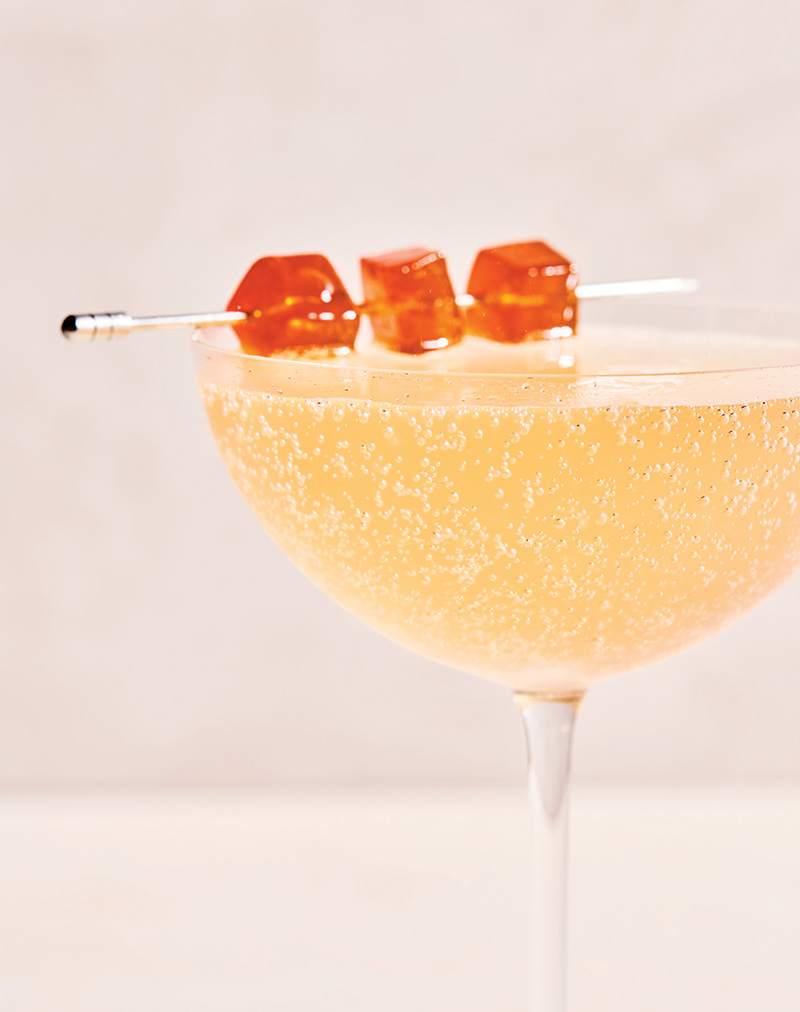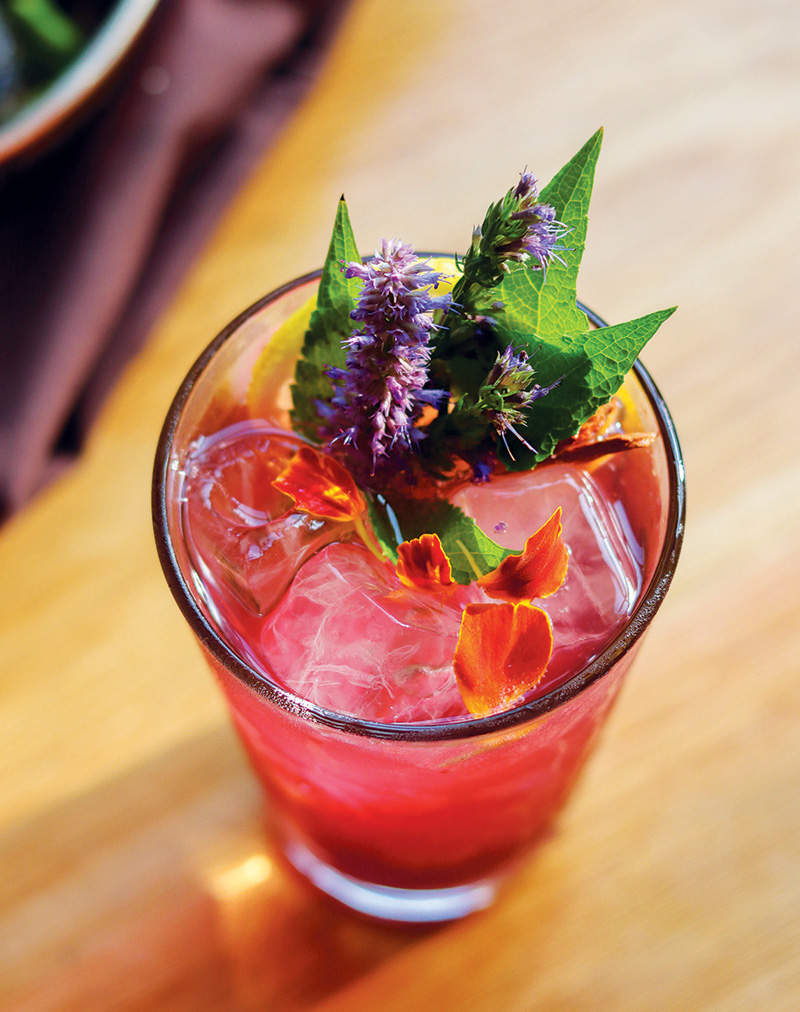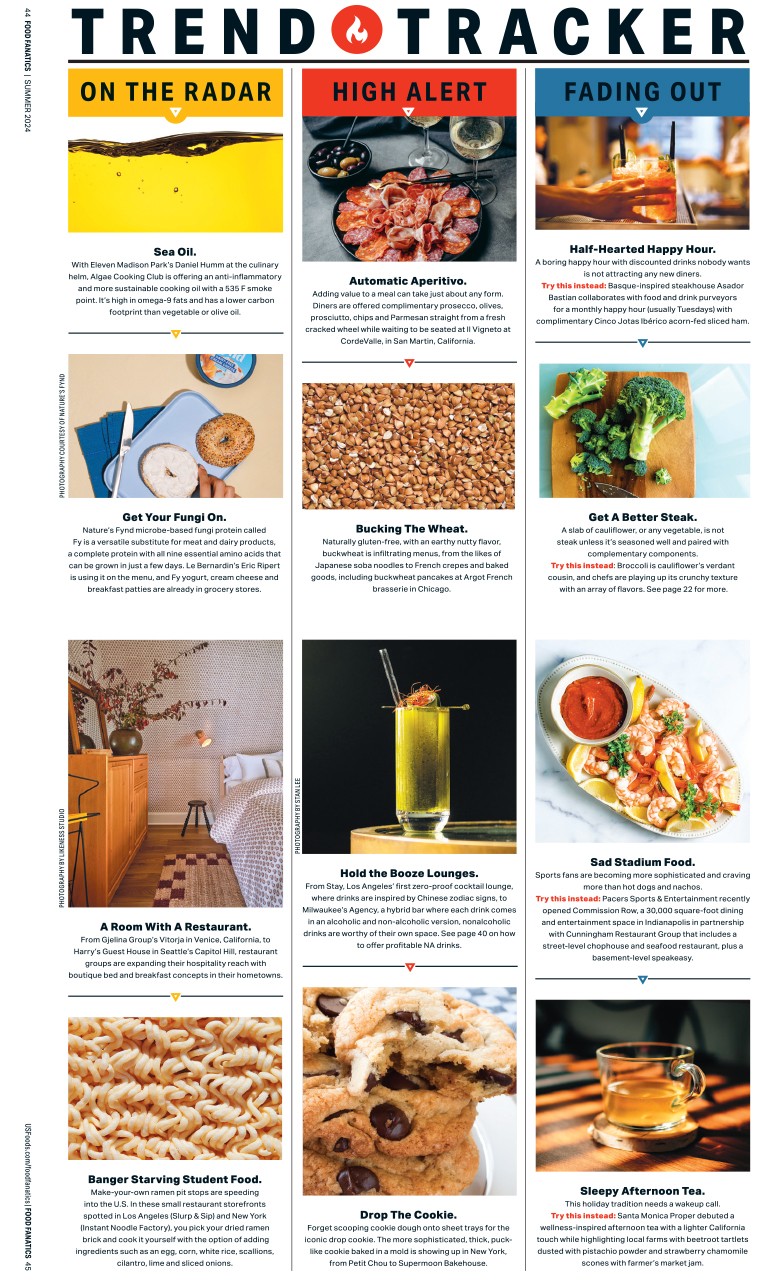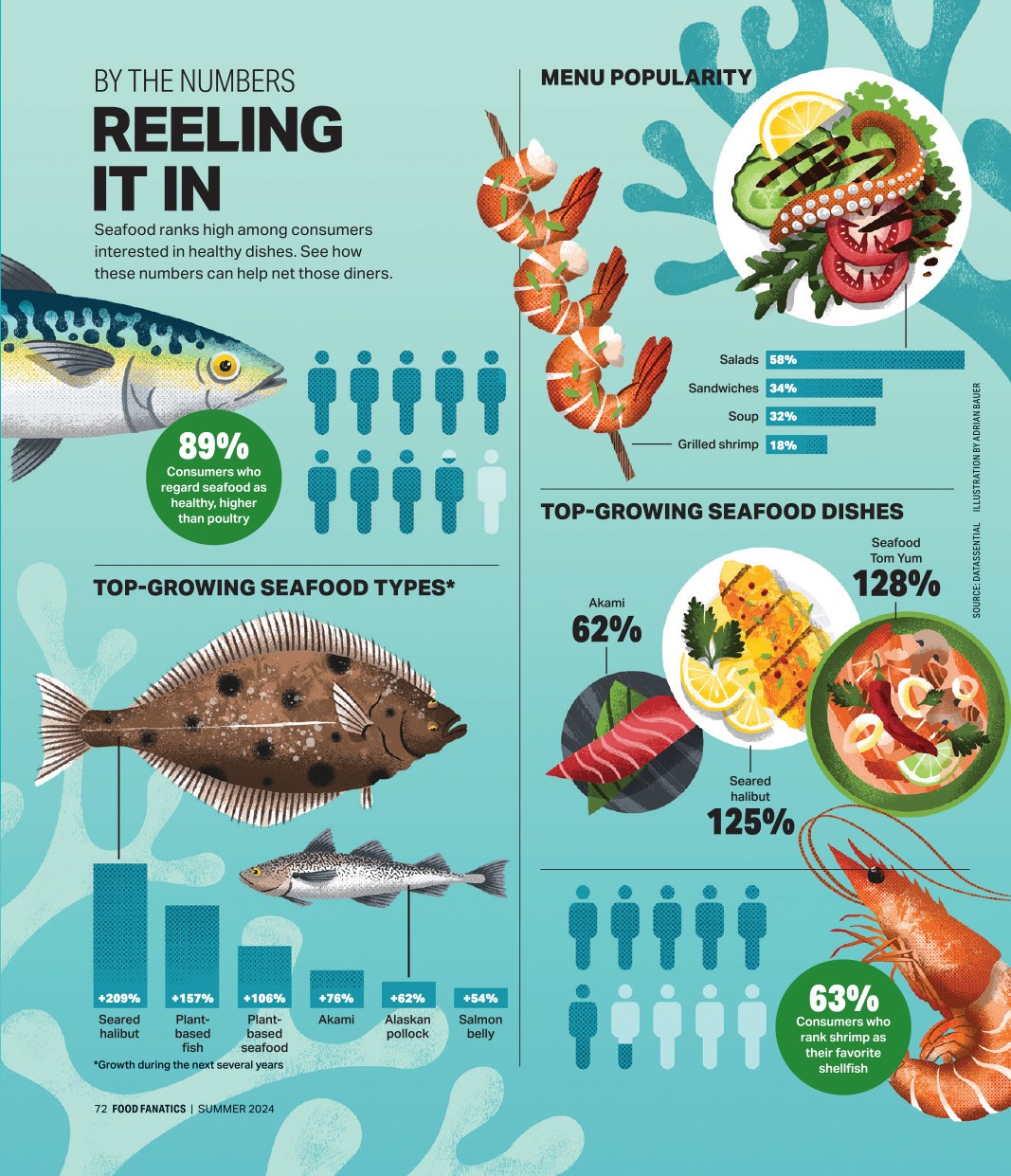How Restaurants Can Build a Profitable NonAlcoholic Drink Program
Capitalize on the rise of nonalcoholic beverages
Dry January, the sober-curious movement, the drop in alcohol consumption for health reasons – especially among younger adults – and the tidal wave of low- and no-alcohol beverages all lead to one must-do: turn the trend into revenue.

Bemoaning the change in booze consumption, restaurateurs say, is shortsighted. No one is suggesting upselling cloyingly sweet kiddie cocktails, but fresh juices with the acidic tang and health benefits of fermented ingredients or spiked with botanical nonalcoholic spirits can fetch far more than a lemonade. Additionally, in the last few years, bottled and canned booze-free beers and cocktails have grown exponentially. Even wines and sparklers rival their quaffable counterparts.
A little effort – more than just saying, “Our bartender can make you a virgin Paloma or any drink without the alcohol” – can have a noteworthy impact on the bottom line. Advice from bartenders, restaurateurs and sommeliers helped compile the 12 steps to dive into the profitable NA world.
1. USE THE RIGHT LANGUAGE
Refrain from calling drinks “mocktails,” which is inaccurate and fails to convey the complexity of no-booze drinks. The industry term is nonalcoholic drinks or simply NA.
2. EDUCATE YOURSELF AND STAFF
 From business trade articles to cookbooks, there’s plenty of information on creating NA drinks. Attributes of canned cocktails and NA beers are less prevalent, which means tasting by trial and error – or asking colleagues with robust NA programs. Tasting, however, could be a fun way to get buy-in from staff, who need to know details about the drinks to sell them – just like the food.
From business trade articles to cookbooks, there’s plenty of information on creating NA drinks. Attributes of canned cocktails and NA beers are less prevalent, which means tasting by trial and error – or asking colleagues with robust NA programs. Tasting, however, could be a fun way to get buy-in from staff, who need to know details about the drinks to sell them – just like the food.
3. THINK OF UP-CHARGES
Offering another component to the drink and charging additional for it can be a way to increase profits or make the cocktail even more appealing, whether it’s a shot of energy or a small bite (see steps #9 and #11).
4. GIVE NA REAL ESTATE
Is it possible to successfully sell a menu item that’s not listed? Don’t make diners ask – list the drinks and describe them like cocktails so diners have a frame of reference. Nixta Taqueria in Austin, Texas, uses the menu to highlight and describe NA drinks with language that matches the fun and casual vibe.
5. MATCH THE CONCEPT
While mash-up concepts mean anything goes for food and beverage, it still makes sense to start with drinks inherent in the cuisine. At Chicago’s Galit, the food and NA drinks take their cues from Middle Eastern fare. The restaurant offers two flavors of gazoz – seasonal sodas with fresh herbs. With a dedicated spot on the menu, the pomegranate soda features hibiscus, cardamom and rose, while the Iranian drink sekanjabin includes a honey shrub with fennel seed and mint. Both are $10.
6. OFFER VARIETY
When labor is a consistent challenge, an NA menu of only handcrafted drinks may not be the best margin-savvy way to go. A selection of canned or bottled NA drinks – beers, cocktails and sparklers – can help.
7. GO FOR UNIQUE
Published four years ago, “Zero” by Grant Achatz still reigns as the definitive book on NA drinks. The creative and original approach comes from The Alinea Group restaurants based in Chicago, most notably Achatz’s Alinea and cocktail lounge The Aviary. The choices range from simple to complex and provide a springboard to create nonalcoholic drinks exclusive to your restaurant.
8. TAKE A CUE FROM WINE LISTS
Describe the attributes of drinks (fruity, bright, savory, herbaceous), but also think of how wine lists discuss varietals. For example, Leitz - Eins Zwei Zero Sparkling Rose, which D&M Wines and Liquors makes from 100% pinot noir grapes and then removes the alcohol, is described as “nicely balanced by the bubbles, the nose shows strawberry, red apple, clementine and clean minerals. The palate is light with good acid and a clean and zingy style.” For NA beer, it’s best to describe the attributes that closely resemble its counterpart with alcohol, such as malty or hoppy.
9. MAKE IT PRETTY
Colorful presentations – the drink itself or its garnishes – can turn heads, stir curiosity and create a brand. Freeze fresh-squeezed fruits and vegetables into cubes to add colorful drama to light-hue drinks. At the Broadmoor in Colorado Springs, Colorado, colorful honey fruit gummies garnish the NA French Bloom sparkler and other housemade cocktails.
10. KNOW YOUR AUDIENCE
Boomers – or those older than 60 – still imbibe like its 1999. Younger diners, specifically Gen Zers, drink alcohol the least often – a trend that’s growing. If your customers skew older, a few NA beverages may do the trick, but if tapping a younger crowd is a goal, an NA program is a must.
11. WORK IN WELLNESS
Eighty percent of consumers want at least one specific health benefit from an NA drink, according to food research firm Datassential. Think green tea, fruits high in antioxidants, protein powders and fermented produce.
12. MAKE IT SEASONAL/LIMITED TIME ONLY
Seasonal drinks, particularly in the summer, have a big audience because they naturally offer FOMO – they come as fast as they go. Watermelon, blueberries, peaches and melons are solid starting points. On-trend flavors such as yuzu, guava, dragon fruit, passion fruit and mango cross beverage categories, from beer and lemonade to smoothies and energy drinks, providing plenty of ways to fill an NA lineup anytime. If you’re still unsure whether NA is a route worth traveling, offer a theme night or LTO to start, but remember the 12 steps.
“Consumer preferences have changed,” says Jake Zubrod, director of restaurants for the Broadmoor and certified sommelier. “It just makes sense if more people aren’t drinking as much alcohol, for whatever reason, that we as operators give them choices that are just as satisfying. And it should go without saying that buying an NA cocktail versus ordering water is good for profits.”



